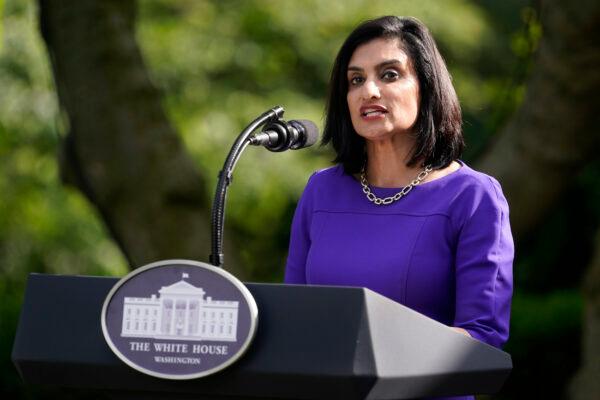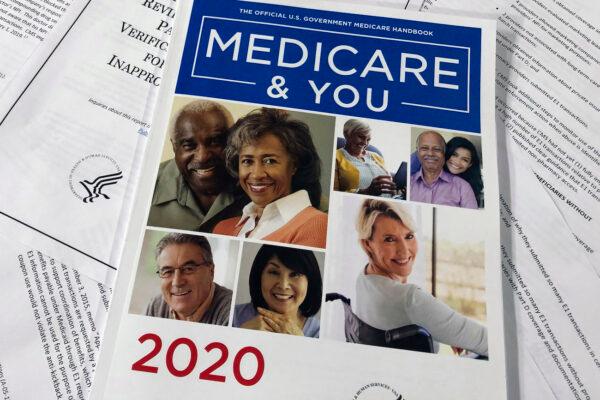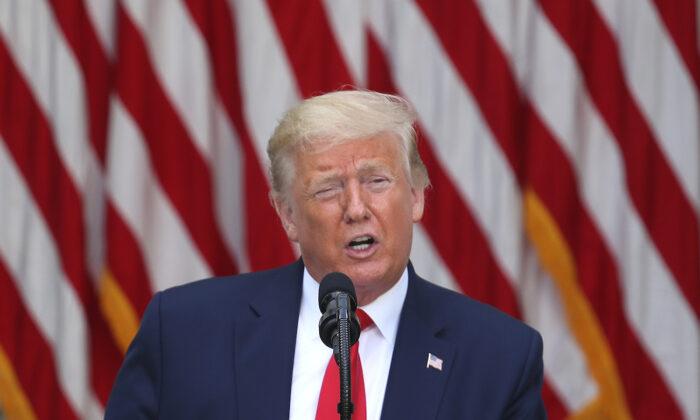WASHINGTON—Many Medicare recipients could pay less for insulin next year under a deal President Donald Trump announced Tuesday.
Medicare recipients who pick a drug plan offering the new insulin benefit would pay a maximum of $35 a month starting next year, a savings estimated at $446 annually. Fluctuating cost-sharing amounts that are common now would be replaced by a manageable sum.
The insulin benefit will be voluntary, so during open enrollment this fall Medicare enrollees who are interested must make sure to pick an insurance plan that provides it. Most people with Medicare will have access to them; the insulin benefit will be available in all 50 states, the District of Columbia, and Puerto Rico. Participation is voluntary for insurers and Medicare recipients alike.
Importantly for patients, the new benefit would cover a range of insulin products, including pen and vial forms for rapid-acting, short-acting, intermediate-acting, and long-acting versions.
Stable copays for insulin are the result of an agreement shepherded by the administration between insulin manufacturers and major insurers, Medicare chief Seema Verma said. The three major suppliers, Eli Lilly, Novo Nordisk, and Sanofi, were all involved.
“It was a delicate negotiation,” Verma said. Drugmakers and insurers have been at odds in recent years, blaming one another for high prices. “I do think this is a big step.”

Verma, head of the Centers for Medicare and Medicaid Services, said 1,750 insurance plans that offer drug coverage to Medicare recipients have agreed to provide insulin for a maximum copay of $35 a month next year. It will be available through “enhanced” plans that may cost more per month but offer additional benefits such as reduced cost-sharing on certain drugs. The cap on copays is expected to lead to a small increase in premiums.
The president last week told Republican senators at a Capitol Hill meeting he still wants to pass a bill this year to lower drug costs, saying “I think you have to do it,” according to a summary from an attendee. Bipartisan legislation to limit price increases and reduce costs for older people with high drug bills is pending in the Senate.
But the fate of any drug pricing bill seems to rest with House Speaker Nancy Pelosi, who has a plan for Medicare to negotiate prices for the costliest drugs, not just insulin. Pelosi would use expected savings to provide vision, dental and hearing coverage for older adults. Most Republicans oppose that approach as an expansion of government price-setting.
Although the White House and Pelosi’s office were in conversations last year about action on drug prices, the relationship between the two leaders has been tense for months.
White House Counselor Kellyanne Conway said the administration can’t wait for the Democratic-controlled House on drug prices. “Waiting for them to act is very perilous,” Conway said.
One out of three people with Medicare have diabetes, and more than 3 million use insulin. At list prices, the drug can cost more than $5,000 a year. Although insured patients don’t pay that, they do notice rising copays that are based on the full cost. People who can’t afford their insulin may try to cope by reducing their doses, a dangerous calculation that can put their lives in jeopardy.

Medicare’s prescription drug benefit is offered by private insurers, either as a stand-alone “Part D” drug plan added to traditional Medicare, or as part of a managed care plan under Medicare Advantage. The taxpayer-subsidized private plans are closely regulated by the government, but by law Medicare is barred from negotiating drug prices.
Insurers and drugmakers welcomed the announcement. The industry group America’s Health Insurance Plans called it an “excellent example of public-private partnerships where everyone wins.” The Pharmaceutical Research and Manufacturers of America said it’s pleased to see the administration focused on lowering out-of-pocket costs for patients.
Medicare estimates that about 6 in 10 beneficiaries are already in prescription drug plans that will offer the new insulin benefit. Those whose plans don’t offer the new option can switch during open enrolment season, which starts Oct. 15. Medicare’s online plan finder will help beneficiaries find plans that cap insulin copays.





